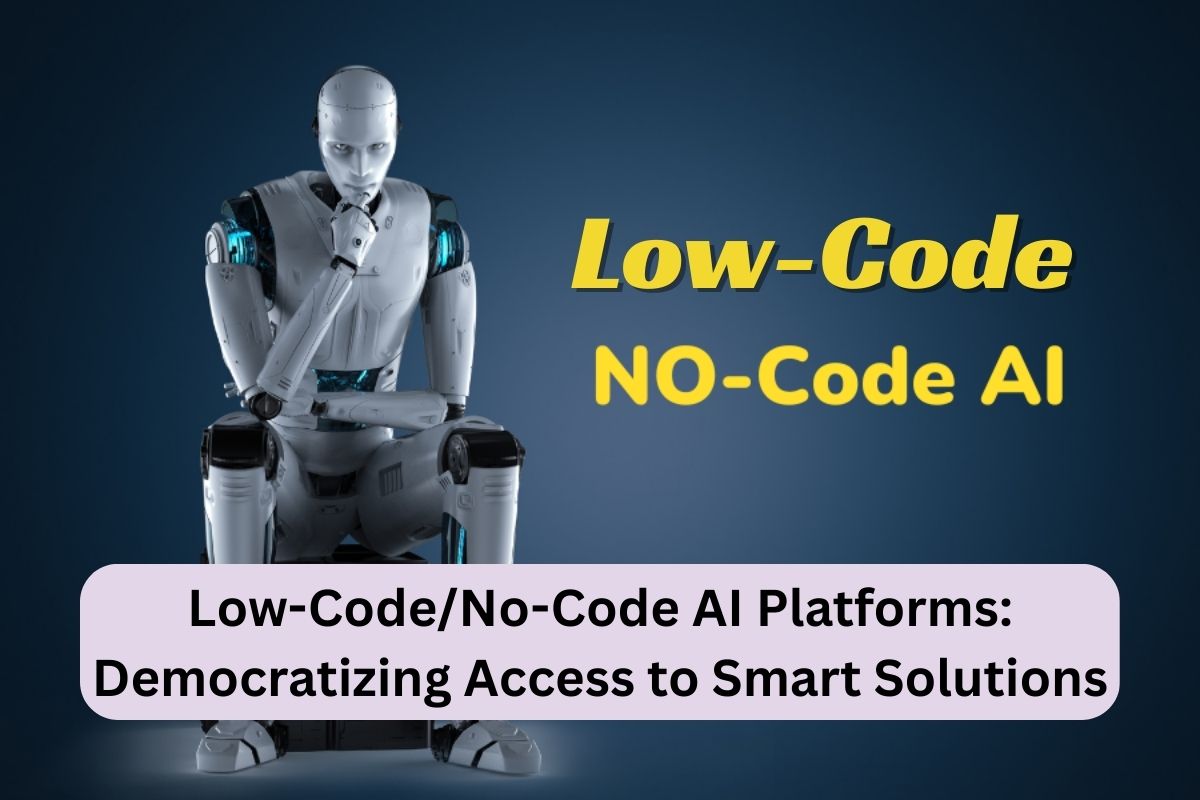Artificial intelligence once felt like a tool reserved only for data scientists, engineers, and large enterprises with deep technical expertise. But today, low-code/no-code AI platforms are breaking down those barriers. These platforms empower non-technical users—often called citizen developers—to design, build, and deploy intelligent applications without writing complex code.
By providing drag-and-drop interfaces, pre-built templates, and guided workflows, these platforms make AI accessible to a wider audience. Businesses, educators, healthcare professionals, and even small startups can now leverage AI without hiring a full team of specialists.
What Are Low-Code/No-Code AI Platforms?
Low-code/no-code AI platforms are tools that allow users to create AI-powered applications with little to no programming knowledge. They typically include:
- Drag-and-drop interfaces for building workflows
- Pre-trained AI models for tasks like text analysis, image recognition, or prediction
- Integrations with common business software (CRM, ERP, marketing tools, etc.)
- Customizable templates for fast deployment
In short, they democratize access to AI by shifting focus from coding skills to creativity and problem-solving.
Low-Code vs No-Code AI Platforms
| Feature | Low-Code AI Platforms | No-Code AI Platforms |
|---|---|---|
| Technical Skill Needed | Some coding knowledge | No coding required |
| Customization | High—users can add custom code for flexibility | Limited to platform features |
| Best Users | Developers, technical business analysts | Non-technical users, business teams |
| Use Cases | Complex AI apps with unique workflows | Quick AI solutions like chatbots, predictions |
| Examples | Microsoft Power Apps, Mendix | Bubble, Lobe, Peltarion |
Benefits of Low-Code/No-Code AI Platforms
- Accessibility: Makes AI development possible for non-technical users
- Faster Deployment: Applications can be built in days instead of months
- Cost-Effective: Reduces dependency on large IT teams or expensive consultants
- Encourages Innovation: Business teams can test new ideas quickly
- Cross-Industry Applications: From marketing automation to healthcare diagnostics, uses are endless
Challenges of Low-Code/No-Code AI Platforms
While empowering, these platforms aren’t perfect. Some challenges include:
- Limited Customization: No-code platforms may not handle highly complex needs
- Scalability Issues: Apps may struggle to grow with enterprise demands
- Security Concerns: Data privacy and AI model transparency must be carefully managed
- Dependence on Vendors: Users may get locked into a single provider’s ecosystem
Real-World Applications
- Retail: AI chatbots for customer support built in hours
- Healthcare: Predictive tools for patient monitoring without deep coding knowledge
- Education: Personalized learning systems designed by teachers, not developers
- Small Businesses: Automated marketing and lead scoring tools built by non-technical staff
The Future of Democratized AI
As low-code and no-code AI platforms evolve, expect even more intuitive interfaces, customizable AI templates, and ethical safeguards. The future could see AI becoming as easy to use as today’s office software, enabling anyone with an idea to bring it to life—without waiting for a dedicated developer team.
This shift not only accelerates digital transformation but also ensures AI becomes a universal tool for innovation.
Low-code and no-code AI platforms are revolutionizing how businesses and individuals engage with artificial intelligence. By removing technical barriers, they democratize innovation, making it possible for anyone—from a teacher to a startup founder—to build AI-powered solutions. While challenges exist, the benefits far outweigh the limitations, paving the way for a future where AI is truly for everyone.
FAQs on Low-Code/No-Code AI Platforms
1. What is the difference between low-code and no-code AI platforms?
Low-code requires minimal coding for customization, while no-code needs none, relying entirely on pre-built tools.
2. Can non-technical users really build AI apps with no-code platforms?
Yes. Drag-and-drop interfaces and templates make it simple for non-technical users to create AI solutions.
3. Are low-code/no-code AI platforms secure?
They can be secure, but businesses should check vendor policies on data handling and compliance.
4. Which industries benefit the most from these platforms?
Healthcare, retail, education, finance, and small businesses are among the top beneficiaries.
5. Will low-code/no-code AI platforms replace developers?
No. Developers remain essential for complex projects, but these platforms free them from repetitive tasks.
